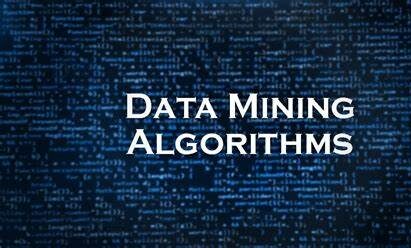Data Mining Algorithms – Organizations are constantly seeking ways to extract valuable insights from this data, making data mining algorithms an essential tool in various industries. This article delves into the different types of data mining algorithms, their applications, and how they help businesses make informed decisions.
What is Data Mining?
Data mining is the process of discovering patterns and extracting useful information from large datasets. It combines techniques from statistics, machine learning, and database systems. With the explosion of big data, organizations need effective ways to analyze and interpret this information, and that’s where data mining algorithms come in.
Key Components of Data Mining
- Data Cleaning: Ensuring the data is accurate and free from errors.
- Data Integration: Combining data from different sources for a comprehensive view.
- Data Selection: Identifying relevant data for analysis.
- Data Transformation: Converting data into a suitable format for mining.
- Data Mining: Applying algorithms to extract patterns and insights.
- Pattern Evaluation: Assessing the discovered patterns for usefulness.
- Knowledge Representation: Presenting the results in a clear and actionable manner.
Types of Data Mining Algorithms
Data mining algorithms can be broadly categorized into several types, each serving a unique purpose. Below, we explore the most commonly used algorithms.
Classification Algorithms
Classification algorithms categorize data into predefined classes or groups. This process involves training a model on a labeled dataset and then using it to predict the class of new, unseen data.
Popular Classification Algorithms
- Decision Trees: Simple to understand and interpret, decision trees split data into branches based on feature values.
- Random Forest: An ensemble method that builds multiple decision trees and merges their outputs for improved accuracy.
- Support Vector Machines (SVM): Effective in high-dimensional spaces, SVM identifies the hyperplane that best separates different classes.
Clustering Algorithms
Clustering algorithms group similar data points together without prior labels. This technique is useful for identifying natural groupings within data.
Notable Clustering Algorithms
- K-Means: Partitions data into K distinct clusters based on distance to the centroid of each cluster.
- Hierarchical Clustering: Builds a tree of clusters by either a bottom-up or top-down approach.
- DBSCAN: Identifies clusters based on the density of data points, making it effective for discovering clusters of varying shapes and sizes.
Regression Algorithms
Regression algorithms predict a continuous outcome based on input variables. This is crucial in scenarios where forecasting is needed, such as sales predictions.
Common Regression Techniques
- Linear Regression: Models the relationship between two variables by fitting a linear equation.
- Polynomial Regression: Extends linear regression by fitting a polynomial equation to capture non-linear relationships.
- Ridge and Lasso Regression: Regularization techniques that prevent overfitting by penalizing large coefficients.
Association Rule Learning
Association rule learning discovers interesting relationships between variables in large datasets. This method is widely used in market basket analysis to understand consumer behavior.
Examples of Association Rule Algorithms
- Apriori Algorithm: Identifies frequent itemsets and generates rules based on their co-occurrence.
- FP-Growth: A more efficient algorithm that uses a compact data structure to find frequent patterns without candidate generation.
Anomaly Detection
Anomaly detection algorithms identify rare items, events, or observations that raise suspicions by differing significantly from the majority of the data. This is vital in fraud detection, network security, and fault detection.
Key Anomaly Detection Techniques
- Statistical Tests: Determine if a data point deviates from a defined statistical norm.
- Isolation Forest: An ensemble method specifically designed for anomaly detection that isolates anomalies instead of profiling normal instances.
Applications of Data Mining Algorithms
The applications of data mining algorithms are vast and span across multiple industries. Below, we highlight some of the most significant areas where these algorithms are utilized.
Healthcare
In the healthcare sector, data mining algorithms help in predicting disease outbreaks, personalizing treatment plans, and managing patient data effectively. For example, classification algorithms can identify patients at risk of developing chronic conditions, allowing for early intervention.
Finance
Financial institutions use data mining to detect fraudulent transactions, assess credit risk, and optimize investment strategies. Anomaly detection algorithms are particularly valuable in flagging suspicious activities.
Retail
Retailers leverage data mining algorithms to understand consumer purchasing behavior, optimize inventory management, and enhance marketing strategies. Association rule learning can identify product combinations frequently purchased together, leading to effective cross-selling strategies.
Telecommunications
Telecommunications companies use data mining to analyze customer usage patterns and predict churn rates. By employing clustering algorithms, companies can segment customers based on their behavior, enabling targeted marketing efforts.
Manufacturing
In manufacturing, data mining algorithms optimize production processes and improve quality control. Predictive maintenance, powered by regression algorithms, helps in forecasting equipment failures before they occur.
Challenges in Data Mining
Despite the benefits, data mining comes with its challenges:
Data Quality
Data quality is paramount in data mining. Poor-quality data can lead to inaccurate predictions and misinformed decisions. Organizations must invest in data cleaning and preprocessing.
Scalability
As data volumes grow, algorithms must scale efficiently. Some algorithms may struggle with large datasets, leading to increased processing time and resource consumption.
Privacy Concerns
Data mining often involves sensitive information. Organizations must ensure they adhere to regulations such as GDPR to protect user privacy and data integrity.
Future Trends in Data Mining Algorithms
The field of data mining is continuously evolving. Here are some trends shaping its future:
AI and Machine Learning Integration
The integration of advanced AI and machine learning techniques into data mining algorithms is expected to enhance their accuracy and efficiency. Deep learning, in particular, is poised to revolutionize data analysis.
Real-Time Data Processing
With the rise of IoT devices and streaming data, real-time data mining is becoming crucial. Organizations will need algorithms capable of processing and analyzing data on-the-fly.
Ethical AI Practices
As data mining becomes more prevalent, ethical considerations will gain importance. Ensuring that algorithms are transparent and fair will be essential in maintaining public trust.
Automated Data Mining
Automation in data mining processes will allow organizations to efficiently analyze data without extensive human intervention. This shift will save time and resources while enhancing productivity.
Conclusion
In summary, data mining algorithms play a critical role in extracting insights from vast datasets. From classification and clustering to anomaly detection, these algorithms empower organizations across various sectors to make informed decisions. As technology continues to advance, the future of data mining looks promising, with new methods and applications on the horizon. To explore more about data mining and its applications, you can visit KDNuggets.
By understanding and leveraging these algorithms, businesses can gain a competitive edge in the data-driven landscape. Whether you’re in healthcare, finance, retail, or any other industry, harnessing the power of data mining will undoubtedly help in navigating the complexities of today’s data-rich environment.




